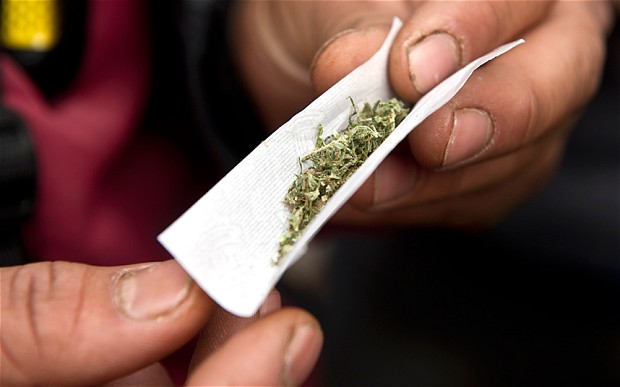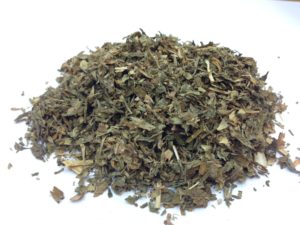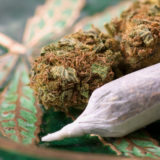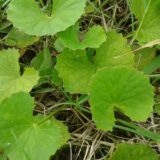Table of Contents
Natural Plants Smoked As Marijuana Alternatives

Are There Any Natural Plants That Have Marijuana-like Effects?
Marijuana is enjoyed by cultures throughout the entire world. Throughout time, there have been many substitutes for a number of reasons in a number of regions. Some cultures have almost always, even exclusively, used some of these marijuana alternatives. Of the very many plants that have been smoked as marijuana substitutes, some have become more popular based on how closely they have been able to simulate the effects of actual marijuana. Marijuana is mellow, yet stimulating. It is sedating, yet euphoric. There is a certain feeling of relaxation and anti-anxiety that comes from smoking a joint rolled of fine bud, that most people cannot describe any other way than “feels like good weed.” But certainly, other plants could be smoked and potentially feel like good weed, right? So which other plants are most popular for their marijuana-like effects? These are the most popular substitutes for, and plants with the closest effects as to those of marijuana.
Best Natural Plants Used As A Marijuana Alternative
This list of natural marijuana alternatives is in order of effectiveness (how close the effects are to those of weed). These plants are enjoyed in select regions of the world throughout history and still to this day for their marijuana-like effects.
 Blue Lotus (Nymphaea caerulea)
Blue Lotus (Nymphaea caerulea)
Blue Lotus is a special plant. It was regarded as highly significant, spiritually and socially among the ancient Egyptians. There are many paintings and artworks, texts and other biological evidences which have strongly linked the ancient Egyptians to Blue Lotus use. It has been served as a tea, a tincture, an alcoholic beverage and (very commonly) smoked. In modern times, it is even vaped. Blue Lotus has been suggested to have two psychoactive alkaloids, apomorphine and nuciferine. Apomorphine is responsible for the dopamine agonist activity, making Blue Lotus a “reward drug.” Unfortunately, Blue Lotus flower are cultivated from so many different harvests that quality can be an issue, despite it being the best marijuana substitute. The high quality stuff can be rare and just like weed, most of the cheap stuff is ineffective due to its old age and low alkaloid content. Jolly Lotus is a premium Egyptian Blue Lotus rich in alkaloid content (better quality), and harvested just like the Egyptians used to do it!
Damiana (Turnera diffusa)
Damiana is very popularly used as a marijuana substitute throughout Mexico, though it is also found employed in Central and South America. It has been smoked, ground into a powder and extracted into a liquor ingredient, and even used in the famous Coca-cola inventor’s French Wine Coca. The coke inventor wasn’t the only person to use Damiana in a tonic or beverage-like concoction. It can be found in a number of liquid-intoxicating beverages throughout the mid to late 1800s including Aztec Damiana Bitters and Liquor Potencial de Damiana, which were among the most notable. It was also used as a nerve tonic. Damiana contains damianin and several other ingredients which contribute to its cannabis-similar effects. Although it has aphrodisiac properties, it is simply most notable for its relaxing properties, which have made it into the popular substitute for marijuana. The flower and leaf are very sweet smelling, and it is this herbage that is smoked for their marijuana-like effects.
Wild Dagga (Leonotis leonurus)
Also known by the names “Lion’s tail” and “Lion’s Ear,” Wild Dagga is native to the lands of Africa. It is very common in Africa, though not found many other places around the world. The natives of the African regions where it is plentiful, however, have long used Wild Dagga when marijuana was not to be found. Some cultures seemed to prefer smoking Wild Dagga as a way of entirely replacing marijuana. The leaves and herbage are often dried and smoked as a marijuana alternative for their calming and relaxing effects. Though some people claim Wild Dagga can be hallucinogenic, it does not possess any hallucinogenic compounds. It is, however, very commonly reported to have effects similar to cannabis. It is even known to some of the African native tribes as “Wild Cannabis,” though the “high” is considerably less potent.
Dream Herb (Zacatechichi – Calea ternifolia)
Some tribes call it the “Dream Herb,” while others know it as “Bitter Grass.” Regardless of its name, it is mostly known for its ability to induce incredible lucid dreams. The dreams are extremely visual and usually much easier to remember than sober dreams. It is sometimes used as a hallucinogen, though its effects are mostly considered “sleep oriented.” Many users have described an extreme relaxation coming from smoking even a bowl or two of Calea ternifolia. Due to the relaxing, sedating-like effects, it is often regarded as a weak substitute for a marijuana indica strain (a more relaxing, calming experience). In some regions of Mexico, it has been used as a permanent alternative to marijuana.
 Siberian Motherwort (Leonurus sibiricus)
Siberian Motherwort (Leonurus sibiricus)
Siberian Motherwort is a close cousin of Wild Dagga, even coming from the same genus. It is native to China, Mongolia, India and Siberia (obviously). It has been nick named “Marihuanilla,” or “little marijuana” due to its marijuana-like relaxing effects. It has been regarded as a mild intoxicant in a number of cultures. It is much weaker than actual marijuana by a long shot, and the weakest on this list; Still, however, Siberian Motherwort is most definitely enjoyed by many cultures around the world today (even being grown now in Mexico and South America too) as a substitute for marijuana when necessary.
Mixing Marijuana Alternatives Together
Some cultures prefer to mix some of these options together. Blue lotus has been mixed with damiana, for example. Wild Dagga is sometimes mixed with Motherwort or Damiana as well. Some people mix Blue Lotus with African dream herb (zacatechichi). Though probably the most popular mix is with tobacco. Almost all of these herbs have been found very commonly mixed with tobacco in almost all cultures of which they are found. Still, alone or together, they are all used on a regular basis in their native territories for being smoked by the natives and various local cultures for their marijuana-like effects.




